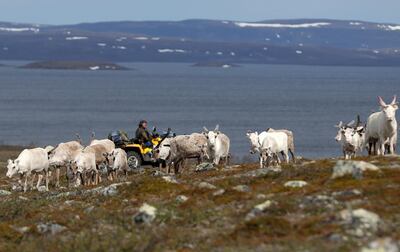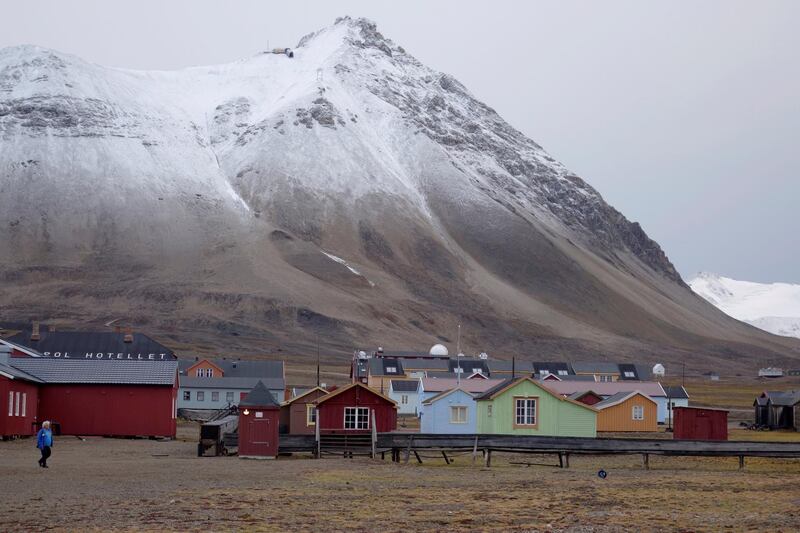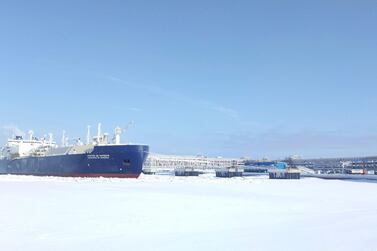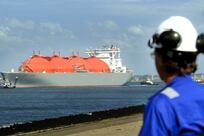Norway's government approved on Thursday the building of a copper mine near Europe's northernmost point despite years of opposition from indigenous Sami herders and fishermen.
Norway's decision on the copper mine has been viewed as a litmus test for the Arctic, where climate change and technology are enabling mineral and energy extraction, shipping and tourism, but threatening traditional ways of life. "The mining project will strengthen the industrial base in the north," Industry Minister Torbjoern Roe Isaksen of the centre-right coalition government said.
"It will contribute positively to the local community, with new jobs and skills."
The Nussir ASA project is expected to bring jobs and investment to the Kvalsund municipality, but the digging could damage summer reindeer pastures and a plan to dump tailings in the fjord would destroy spawning grounds for the coastal cod.
"I am shocked by the government's decision. I had hoped that the Norwegian government would have heard our arguments ... They do not take us seriously," reindeer herder Nils Mathis Sara told Reuters. "We will definitely protest against this decision."
A group of reindeer herders will discuss whether to take legal action in an attempt to stop the mine, he said.

One green group, Nature and Youth, was planning a demonstration in front of the Royal Palace in Oslo on Friday when the cabinet holds its weekly meeting with King Harald.
Nussir says the area contains an estimated 72 million tonnes of copper ore - Norway's largest reserve - and plans to invest more than 1 billion Norwegian kroner (Dh425.2m) in the mine while making only minimal intrusion in the local way of life.
Local officials gave a green light in 2012, but the project has since been stuck awaiting an operating licence, with big industry players paying close attention to the process, the International Centre for Reindeer Husbandry has said.
Kvalsund, a village of painted wooden houses on the Repparfjord with 1,027 inhabitants, said the mine would boost a municipality that spends 40 per cent of its income caring for the elderly as young people move away.
Herders around the Arctic in other Nordic nations, Russia, Canada and Alaska, echo the Norwegian Sami concerns, citing threats from climate change, mining, oil spills and poaching as well as thoughtless behaviour from townspeople and tourists.
Global majors, including Eni, Equinor, Gazprom, Glencore, Lukoil and Rio Tinto, are all grappling with how to square their prospecting plans with the interests of people whose views count more than in the past.
Average temperatures in the Arctic regions of the world, where some four million people live, have risen more than 2° degrees Celsius (3.6°F) since pre-industrial times, twice as fast as the world average, according to research for the intergovernmental Arctic Council.
Norway is not alone in opening up the Arctic to heavy industry. In September The National reported on Yamal LNG, a $27 billion liquid natural gas plant that lies in Russian territory 450km miles north of the Arctic Circle.
In the winter, when there’s zero sun for more than two months, temperatures reach minus 25°C on land and minus 50°C in the blinding fog out at sea. But there’s a lot of fossil fuel in this wasteland - 44 trillion cubic feet, the equivalent of about 8 billion barrels of oil. So Yamal LNG, controlled by Russian natural gas producer Novatek, has brought together partners to spend an unprecedented sum on a minimum of fifteen 305 metre, $320 million tankers to break the ice themselves. “The vessel has to be able to perform her tasks in extremely harsh conditions,” Mika Hovilainen, an icebreaker specialist at Aker Arctic Technology, the Helsinki company that designed the ships, said at the time. “Systems have to work properly in a very wide range of temperatures.”
These vessels are part of a much bigger game. “This is perhaps the largest step forward in our developing of the Arctic,” Russian President Vladimir Putin said in December 2017 at the opening of the Yamal LNG facility. "This is where the largest mineral reserves are located. This is the site of a future transport artery that I am sure will be very good and efficient: the Northern Sea Route.”







